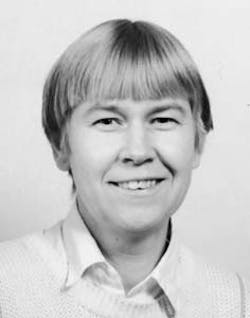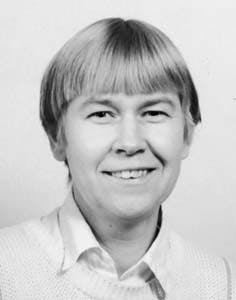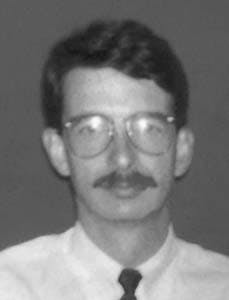MODEL OPTIMIZES COMPRESSION FOR OFFSHORE GAS FIELD
Mona D. Trick
Neotechnology Consultants Ltd.
Calgary
Todd Hubble
E.P. Operating Co.
Dallas
An integrated forecasting model determined the most economical compression to install in a Gulf of Mexico gas field. The gas contract for the field, operated by E.P. Operating Co., required sufficient compression to maintain a deliverability of 67 MMscfd.
Needed compression must be evaluated over the life of a field. A compressor sized for current conditions invariably is not the most economical choice.
To model a gas field properly, the overall system must include the following:
- Reservoir performance
- Sandface inflow performance
- Multiphase well bore pressure losses
- Multiphase gathering system pressure losses
- Field facility performance.
The forecasting model, Forgas,1 integrates these items into a single data file.
An integrated approach can accurately evaluate various development strategies as easily and quickly as commonly used approximate methods.
In this approach to allow timely installation of needed equipment, the effects of time and cumulative production are incorporated to determine the economic optimum field development for the entire field life.
The interaction of the wells in the gathering system while sharing facilities is incorporated automatically.
FIELD DESCRIPTION
E.P. Operating Co.'s Mississippi Canyon gas field has six subsea wells on two templates in about 1,500 ft of water connected by flow lines to a platform in 400 ft of water. Template A is about 3 miles and Template B is 6 miles from the platform (Fig. 1) (38771 bytes).
Each well has two 3-in. flow lines, one for the tubing and the other for the annulus. Currently, all wells produce from the same reservoir. For three wells, both the tubing and annulus flow lines carry production from the tubing. Condensate production is about 8 bbl/MMscf.
Each well is completed with screens and gravel pack. To maintain gravel pack integrity, the sandface drawdown must be kept below 500 psi. A work string was used to acidize and test the wells before running the tubing.
Because the wellhead has no facilities for pressure or temperature measurement, input parameters for modeling well production could not be matched to actual performance.
To ensure that sandface drawdown stays less than 500 psi, each well is choked individually at the platform. The flow lines are pigged as required to remove liquids. Chokes are set and then gradually opened to maintain the desired flow while keeping the sandface drawdown to below 500 psi.
MODELING PERFORMANCE
The following eight steps illustrate the integrated modeling approach:
- Fluid properties are modeled with the Peng-Robinson2 equation of state. The fluid properties program, Inprop,1 writes the calculated phase volumes, densities, and viscosities for a matrix of pressures and temperatures into a file.
The forecasting model interpolates within this matrix to determine the appropriate fluid properties for the composition of interest.
- The reservoir pressure performance is based on the material balance equation for a single phase gas. This is defined as pressure divided by compressibility (P/Z)-vs.cumulative production. This equation is computed using the original gas in place and the original reservoir pressure. The current reservoir pressure is then determined given the current pool cumulative production for each pool.
While a simple tank-type reservoir is applicable to many gas fields, a three dimensional reservoir simulator is required for complex reservoirs. The forecasting model has been successfully coupled to a reservoir simulator3 to handle these situations.
- Using the current reservoir pressure, the sandface flowing pressure corresponding to a chosen flow rate is determined using the Jones, Blount, and Glaze4 inflow performance relationship. The multiphase pressure losses between the sandface and wellhead are then predicted using the Aziz, Govier, and Fogarasi5 multiphase pressure loss method.
At each of several flow rates, the corresponding wellhead flowing pressure is calculated and a wellhead deliverability curve is obtained when these points are plotted. The flow rates corresponding to different back pressures can be easily read from this curve. just beyond the peak of this curve (Fig. 2) (28816 bytes) lies the minimum stable flow rate. The forecasting model will not allow the well to produce at a rate less than this minimum liquid cleanup rate. Wellhead deliverability curves are generated for all wells in the model.
- The required platform arrival pressure is computed as the sum of the pressure loss across the platform and the contracted gas delivery pressure. If a compressor is installed, its inlet pressure is calculated using the single stage equation found in Katz, et al.,6 including the effect of multiple stages using the equation described by Ikoku.7
- Based on the pressure at the platform, the forecasting model determines the flowing wellhead pressure using the Eaton, et al.,8 correlation to calculate liquid holdup and the Oliemans9 equation for frictional pressure loss. Uphill hydrostatic losses are handled using the Flanigan10 hydrostatic pressure loss procedure.
The maximum flow rate for each well depends on the back pressure on the well; however, the back pressure on the well also depends on the flow rate for the well. The forecasting model uses an iterative procedure to solve both unknowns in a network which can include multiple wells and complex branching.
- The deliverability of the system is calculated and compared to the specified peak demand contract. The contract load factor (ratio between peak demand and actual sales) is then applied to determine the cumulative production of the wells and the reservoirs over the time step.
- Based on the revised cumulative production, the reservoir static pressure for all reservoirs and wells is redetermined at the start of the next time step.
- Steps 3-7 are repeated until the end of the forecast or until the installation can no longer deliver economic flow rate.
MODEL OUTPUT
At each time step, the forecasting model prints flow rates of all wells, and pressures in the gathering system, wellhead, sandface, and reservoir. Analysis of these results can reveal premature demise of wells due to minimum cleanup rates, increases in pressure losses due to low liquid velocities in the gathering system, and uneven depletion of reservoirs.
Evaluation of the net effect of any changes to the system is easy. For example, by specifying data for a compressor (maximum power, minimum suction pressure, efficiency, and fuel usage), one can predict the increased flow rates over the entire forecast period due to the addition of that compressor. Other questions that can be answered by the integrated forecasting model are:
- Does the increase in production make the addition of a compressor worth its cost?
- When should the compressor be installed for optimum profitability?
For the Gulf of Mexico field, first a base case was created by assembling all the data into a single data file. After the cumulative production at the start of the forecast was specified, the model was instructed to forecast up to 10 years or until less than 10 MMscfd was being delivered to the platform. The forecasting model enforced the 500 psia sandface drawdown limitation with a wellhead choke. The predicted deliverability is shown in Fig. 3 (27977 bytes).
The model predicted that the field's deliverability would drop below the target after 1 year; therefore, during the second year, no wells could produce. This result indicated that platform compression was needed.
Different compression amounts were evaluated (Fig. 3) (27977 bytes) by fixing the power, specifying a minimum suction pressure of 400 psia, and assuming fuel usage and efficiency. From a reserves recovery approach, the optimal compression requiring the least choking of wells was 750 bhp.
REFERENCES
- Computer software provided by Neotechnology Consultants Ltd., Calgary.
- Peng, D.Y., and Robinson, D.B., "A New Two Constant Equation of State," Ind. Eng. Chem. Fund., 1976, Vol. 15, P. 59 and Peng, D.Y., and Robinson, D.B., "Two and Three Phase Equilibrium Calculations for Systems Containing Water," Can. J. Chem. Eng., Vol. 54, December 1976, P. 595.
- Trick, M.D., Agarwal, R., Ammer, J.R., Mercer, J.C., and Harris, R.P., "Gas Field Deliverability Forecasting: A Coupled Reservoir Simulator and Surface Facilities Model," Paper No. 94-62, CIM Technical Conference, June 12-15, 1994.
- Jones, L.G., Blount, E.M., and Glaze, O.H., "Use of Short-Term Multiple-Rate Flow Tests to Predict Performance of Wells Having Turbulence," Paper No. SPE 6133, SPE Annual Technical Conference and Exhibition, New Orleans, October 1976.
- Aziz, K., Govier, G.W., and Fogarasi, M., "Pressure Drop in Wells Producing Oil and C;as," JCPT, Vol. 11, July 1972, P. 38.
- Katz, D.L., Cornell, D., Kobayashi, R., Poettmann, F.H., Vary, J.A., Elenbaas, J.R., and Weinaug, C.F., Handbook of Natural Gas Engineering, McGraw-Hill, 1959, P. 317.
- Ikoku, C.U., Natural Gas Engineering, A Systems Approach, PennWell, 1980, P. 374.
- Eaton, B.A., Andrews, D.E., Knowles, C.R., Silberberg, I.H., and Brown, K.E., "The Prediction of Flow Patterns, Liquid Holdup and Pressure Losses Occurring During Continuous Two-Phase Flow in Horizontal Pipelines," JPT, Vol. 19, June 1967, P. 815.
- Oliemans, R.V.A., "Two-Phase Flow in Gas-Transmission Pipelines," Paper No. 76-Pet-25, Joint Petro]. Mech. Eng. & Pressure Vessels and Piping Conf., Mexico City, Sept. 19-24, 1976.
- Flanigan, O., "Effect of uphill flow on pressure drop in design of two-phase gathering systems," OGJ, Vol. 56, No. 10, Mar. 10, 1958, P. 132.
THE AUTHORS
Hubble holds a BS in petroleum engineering from Louisiana State University.
Copyright 1995 Oil & Gas Journal. All Rights Reserved.


